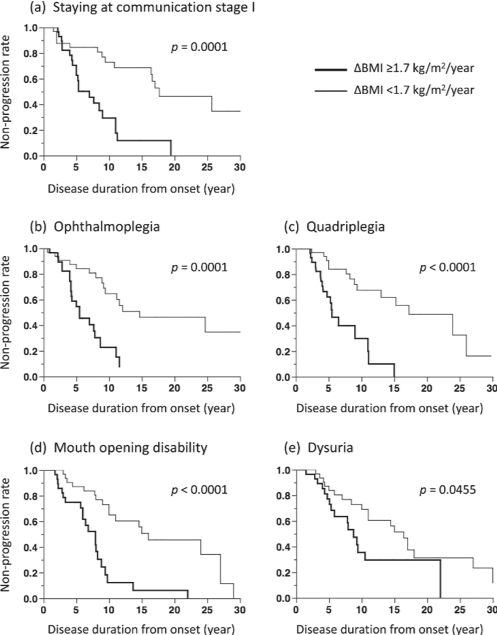HOME > Topics2019 > 22 August 2019
22 August 2019
Yuki Nakayama & Toshio Shimizu, etal (ALS Nursing Care Project) published a paper on “Body weight variation predicts disease progression after invasive ventilation in amyotrophic lateral sclerosis” in Scientific Reports
Body weight variation predicts disease progression after invasive ventilation in amyotrophic lateral sclerosis
Summary
Body weight decline is an independent predictor of survival in in the early stages of amyotrophic lateral sclerosis (ALS), in this paper we reported the body weight decline in the early stages of ALS before TIV usage may predict disease progression in the advanced stages of ALS.
- <Title of the paper>
- Body weight variation predicts disease progression after invasive ventilation in amyotrophic lateral sclerosis
- <Journal>
- Scientific Reports
https://www.nature.com/articles/s41598-019-48831-9
DOI: 10.1038/s41598-019-48831-9
Details
Sixty ALS patients with TIV were enrolled and followed-up prospectively in this study. They were divided into two groups based on the speed at which they lost weight during earlier disease stages, measured as the time from diagnosis to the start of invasive ventilation. Weight loss speed was calculated based on the rate of a person’s decline in body mass index (ΔBMI) over that time frame.
Statistical analyses examined the relationship between ΔBMI and changes in patients’ communication stage or the motor disabilities.
Results showed that those who lost weight faster in the years after diagnosis (ΔBMI greater than 1.7 kg/m2 per year) lost an ability to communicate and open their mouths sooner than those who dropped weight at a slower rate (ΔBMI lower than 1.7 kg/m2 per year).
Those who lost weight faster also developed ophthalmoplegia (eye muscle paralysis), total quadriplegia (limb paralysis), and dysuria (urinary catheter insertion) earlier than others.
Statistical analyses found a greater ΔBMI to be an independent prognostic factor for the early development of both total quadriplegia and ophthalmoplegia.
This study may provide not only insight on the disease mechanisms of ALS but also provide further information for patients and clinicians particularly at the time of decision-making for TIV use. The findings may bring hope to patients who showed relatively slow progression and slow BMI decline before TIV use.


